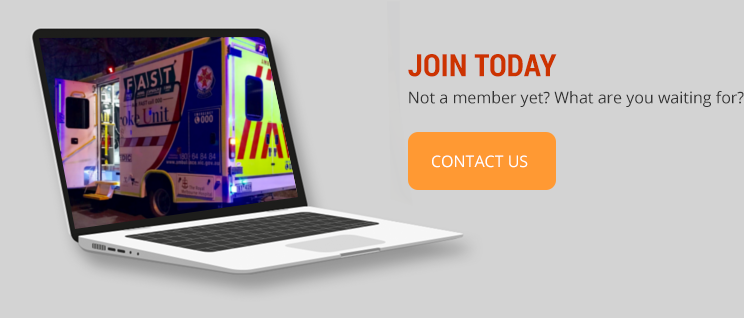
Different staffing models support each MSU program and are based largely on manpower availability, radiation safety requirements, role capabilities, and prehospital care regulations. While regulations vary in different countries and even within individual states, most require that vehicles classified as ambulances be staffed with individuals educated and credentialed to work in prehospital emergency settings, such as emergency medical technicians (EMTs) and EMT-paramedics (EMT-P). Additionally, drivers of vehicles classified as ambulances must hold special drivers’ licenses earned after training and testing for high speed emergency transport.
Because of the highly specialized nature of MSU work, additional staff must supplement the required EMT/EMT-P crew. First and foremost is the need for vascular neurology expertise. While this role could be filled by vascular neurologists themselves and/or those currently completing vascular neurology fellowship training, the limited supply of vascular neurologists within some countries, including the US, makes this unfeasible for many centers. Alternatives to use of vascular neurologists in the field commonly include telemedicine-based physicians supported by a registered nurse crew member who is experienced in emergency assessment and management of acute stroke patients. However, no countries permit a licensed registered nurse without nurse practitioner (NP) licensure and credentialing to independently order medications and testing, and non-NPs may not take orders from EMT or EMT-P crew members, and are therefore subject solely to the direction provided by licensed physicians or NPs. The Memphis MSU is staffed by vascular neurology board-certified NPs50 who work similarly to on-board vascular neurologists, localizing clinical findings, reviewing the CT and CTA source images, and providing acute treatments including tPA, supported by telephone availability of physician consultation. All staffing configurations must be supported by a strict quality improvement process including case review to ensure both accurate diagnostic performance and safe practice.
While standards likely vary by country, safe management of CT imaging in the MSU requires staffing a CT technologist. In the USA, most states require licensing of CT technologists. Radiology technologists first complete either an associate’s or a bachelor’s of health science degree which makes them eligible for registration with The American Registry of Radiologic Technologists; the RT credential is then supplemented with additional education and training for registration as a CT technologist. Many CT technologists are also cross-trained and skilled in other forms of imaging such as transcranial Doppler and duplex imaging, and in obtaining intravenous access.
An overall consideration for MSU staff is the need to understand roles and direction based on the expertise that each of these skilled providers brings to the scene. For example, EMTs and EMT-Ps are experts at prehospital scene management, and therefore the scene should be secured and overseen by these providers. Additionally, because prehospital care may often include medical events beyond that of an initial stroke presentation (including extreme events such as respiratory and/or cardiac arrest), EMTs and EMT-Ps bring substantial expertise to the management of these nonstroke emergencies that should be respected. Local government sanctioned ambulances staffed with EMTs and EMT-Ps are also supported by district, regional, or state protocols that direct how to manage a wide variety of emergencies beyond stroke. Therefore, when the MSU is integrated into the regional EMS system, it should adopt these protocols thereby preventing the need to write extensive new protocols across numerous disease states.
Finally, experts on board the MSU must establish comfortable collaborative working relationships with all prehospital care professionals to support optimal patient care. The prehospital care setting can be chaotic and unpredictable, including everything from unsafe locations, to highly erratic behavior on scene. Combined with unstable patient circumstances, the prehospital environment may challenge the performance of even the best clinicians. All these considerations mandate that potential providers should be cautiously vetted for appropriate fit for roles on an MSU.